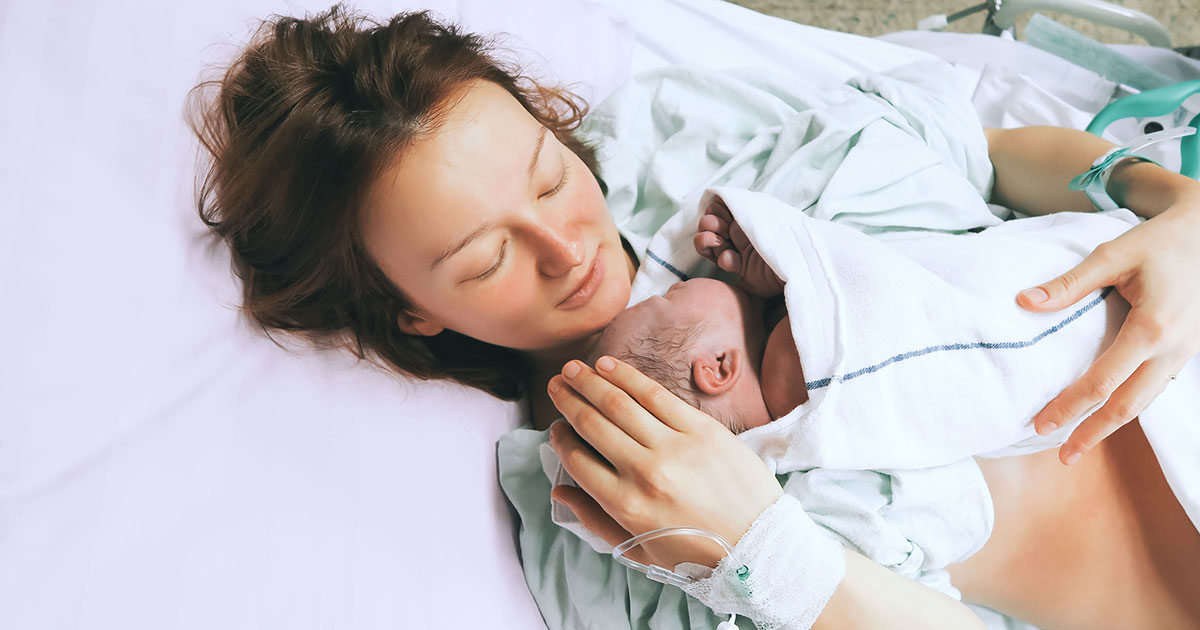Serious Postpartum Complications Women Can Face
When tennis superstar, Serena Williams, recently revealed the harrowing experience she endured after giving birth to her daughter in September, women all over the nation are now questioning the care mothers receive after giving birth and the complications they often deal with. This goes beyond postpartum depression - women can encounter a multitude of issues after giving birth, from experiencing severe hemorrhaging to dealing with blood clots, all similar to what Williams faced in her nearly fatal birth experience.
A Rising Mortality Rate

In the United States, an estimated seven hundred to nine hundred women die every year due to preventable pregnancy and childbirth-related causes. The United States has the highest maternal mortality rate in the developed world. Approximately another 65,000 come close to death, according to the Centers for Disease Control and Prevention (CDC), with the highest rates amongst African American and Native American mothers, and women who live in rural areas.
A recent CDC survey conducted in four states found around sixty percent of these maternal deaths were preventable. Why is the maternal mortality rate in the U.S. incredibly high? One reason is due to the lack of information available for new moms on the potential symptoms to be awareof, and less often, a lack of education for nurses and doctors when it comes to the complications mothers face after giving birth.
Postpartum Complications

There are numerous complications women can face after giving birth. However, heart-related problems, such as cardiovascular disease and heart failure, is the leading cause of maternal death in the United States. According to recent data, cardiovascular problems account for more than a quarter of these deaths. Other serious complications include pre-eclampsia, which is pregnancy-related high blood pressure, and blood clots in the lungs and other parts of the body also contribute to maternal deaths.
Other complications include postpartum infections, including uterine, bladder, or kidney, excessive bleeding after delivery, pain in the perineal area, discharge, swollen breasts and clogged ducts, hemorrhoids and constipation, as well as postpartum depression. To learn more about postpartum depression, another significant health issue women deal with post-pregnancy, read Postpartum Depression Causes and Symptoms.
Postpartum Hemorrhaging

Although bleeding following the delivery of a child is quite common for new moms, heavy bleeding that turns into hemorrhaging only affects two percent of all women, especially if their labor was long, they have had multiple births, or the uterus is infected. Hemorrhaging usually occurs because the uterus fails to contract properly after the woman delivers the placenta, or due to tears in the uterus, cervix, or vagina. If the uterus is not contracting, a midwife or doctor may massage the uterus to help it contract, or the doctor will administer oxytocin, a synthetic hormone, to stimulate contractions.
The doctor or midwife should be closely monitoring the mother during this time to ensure the uterus contracts properly and to prevent infection. If hemorrhaging begins a week or two after delivery, it could be due to a piece of placenta still in the uterus, which will need to be surgically removed. When home, the patient should report any heavy bleeding to their doctor immediately.
Infections

As mentioned earlier, when bits of the placenta remain in the uterus, it can lead to an infection. An infection of the amniotic sac during labor can lead to an infection in the uterus after delivery as well. Flu-like symptoms along with a high fever, a rapid heart rate, an abnormally high white blood cell count, a swollen and tender uterus, and a putrid smelling discharge are common symptoms of a uterine infection. Doctors can treat this type of infection with intravenous antibiotics.
Another common infection is a kidney infection, which occurs when bacteria spread from the bladder to the kidneys. Symptoms include constant urination with a strong urge to go, a high fever, pain in the lower back or side, constipation, and painful urination. Treatments include a dose of oral or intravenous antibiotics, and the patient is often instructed to drink plenty of fluids.
Perineal Discomfort

Women who deliver their child vaginally will often deal with pain in the perineum area, where these delicate tissues can be stretched or torn during delivery. This often results in the tissue feeling swollen, bruised, or sore. As the body heals after childbirth, this sensitive area should heal after a few weeks. Common treatments to comfort the area include sitz baths, cold packs, or warm water applied to the area to reduce redness and possible infection. Women are also advised to wipe front to back to reduce the risk of infection, and if necessary, can use a donut-shaped pillow to sit on to ease any tenderness they may feel.
Hemorrhoids And Constipation

Hemorrhoids and constipation are other common postpartum conditions that many new moms face. Both can be aggravated by the pressure of the enlarged uterus and fetus on the lower abdominal veins. Over-the-counter ointments and sprays, along with a rich diet consisting of fiber and fluids are common treatments that help reduce both of these issues. Warm sitz baths with a cold compress can also provide relief. Patients are also advised not to use enemas, laxatives, or suppositories unless instructed to do so by a doctor, as it can worsen these symptoms, especially if a woman has stitches in the perineal area or had an episiotomy.
Mastitis And Clogged Ducts

Mastitis, otherwise known as a breast infection, consists of tender, reddened areas on the breast. They can be caused by bacteria and lowered defenses against exhaustion, stress, or cracked nipples. If symptoms appear, they usually are fever and headaches, chills, fatigue, and nausea and vomiting. Standard treatment is an antibiotic from a doctor. The patient may continue to breastfeed, as an infection does not affect the quality of milk, and it is also vital the patient drinks plenty of fluids and gets lots of rest. A warm, wet towel applied to the affected areas can provide some relief, and a cold compress after nursing may also reduce the congestion in the breast.
Clogged milk ducts, which often result in redness, pain, swelling, or a lump in the breast, can appear to be mastitis. However, clogged ducts are not accompanied by flu-like symptoms. Doctors will recommend the patient massages their breast, frequently nurse until there is no more milk, and apply warm, wet packs or towels to the area to alleviate discomfort.
Blood Clots

Although it is quite normal for a woman to bleed right after delivery and for the subsequent weeks after giving birth, some blood clots and symptoms the body dispels can indicate a more crucial health problem. Normal blood clotting has a jelly-like appearance, and can contain mucus or tissue, and can be as large as a golf ball. Bleeding will be at its heaviest right after childbirth due to the uterus shedding its lining, however, the bleeding and discharge most women experience should completely slow down or stop within five to six weeks. Although blood clots and bleeding cannot be prevented, many doctors will advise patients to monitor the blood flow and use sanitary napkins.
Systemic Blood Clots

The following symptoms could indicate a woman is experiencing an infection or excessive bleeding: bright red blood after the third day after birth, difficulty breathing, a high fever over 100.4 degrees Fahrenheit, severe headaches, loss of consciousness, stitches separating in the perineum or abdomen, foul-smelling discharge, and passing large clots (bigger than golf balls) twenty-four hours after giving birth. Women who have recently given birth are also at an increased risk for blood clots in their arteries, similar to what Serena Williams experienced.
These systemic clots can lead to a heart attack, a stroke, pulmonary embolism (blood clotting in the lungs), and deep vein thrombosis. Symptoms for systemic blood clots include chest pain or pressure, pain or numbness, loss of strength on one side of the body, loss of balance, swelling or pain in a leg, and trouble breathing. If a patient has a medical or hereditary history of blood clots, they should alert a doctor before and after birth so they can be closely monitored.
Cardiovascular Issues

Besides blood clotting, peripartum cardiomyopathy (PPCM) is a rare condition affecting 1,000 to 1,300 women in the U.S. each year. It is an uncommon form of heart failure that occurs in the last month of pregnancy or five months after giving birth. The heart chambers are enlarged and the muscles weaken, which leads to less blood flow and less oxygen being circulating throughout the body, affecting the lungs, liver, and other systems.
The condition can be difficult to detect as the symptoms are similar to what women experience in their third trimester, such as shortness of breath, and swelling of the legs and feet. Causes of PPCM include obesity, a medical history of cardiac disorders, smoking, alcoholism, use of certain medications, poor nutrition, multiple pregnancies, and it is more common in African-American patients. Treatments for PPCM include angiotensin-converting enzyme (ACE) inhibitors, beta-blockers, diuretics, digitalis, and anticoagulants.
